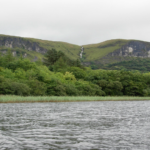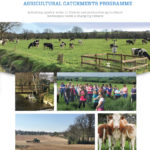Marie Archbold describes how the EPA Catchments Unit has led…
Updated Cycle 3 Catchment Reports published by EPA
The EPA has published an updated Cycle 3 Catchment Report for each of our 46 catchments. These assessments provide an overview of the situation in the catchment and will help support the River Basin Management Plan 2022-2027 implementation process.
Each Cycle 3 Catchment Report includes the following:
- A Water Quality Summary
- Details on High Status Objective waterbodies
- Water Quality Changes
- Significant Issues
- Significant Pressures
- Areas for Action
- An appendix with detailed waterbody scale information for all waterbodies in the catchment
These Catchment Reports are largely based on information available to the end of 2021.
How to access the Cycle 3 Catchment Assessments
- Go to the catchments.ie Data page: https://www.catchments.ie/data/
- Type in the name of the catchment you are looking for in the Data search box, or click on the catchment you are interested in on the map of Ireland
- Once the page for your catchment is opened, you will see a link to the PDF of the Catchment Assessment
Update on pressures impacting on water quality
The Environmental Protection Agency (EPA) has also published the latest assessment of the pressures that impact on water quality in our rivers, lakes, estuaries, coastal waters and groundwaters. The assessment shows that 34% of our waterbodies are at risk of not meeting their water quality objectives because of the impacts of human activities.
Nutrient pollution from agriculture and urban waste water remains the most significant issue. Alterations to the physical aquatic habitat (hydromorphology) caused by dredging, straightening of river channels and drainage, and loss of excess fine sediment to waterways are also a significant concern.
Learn More:
You can download the ‘Update on pressures impacting on water quality’ from the EPA website.
The report is accompanied by a spreadsheet which has information including the ecological status, impacts and pressures for all 4842 waterbodies in Ireland. This spreadsheet also includes links to each individual waterbody page on www.catchments.ie which includes detailed information on each waterbody and chemistry data for download where available. There is also a link to view each waterbody on the EPA Water Map.







